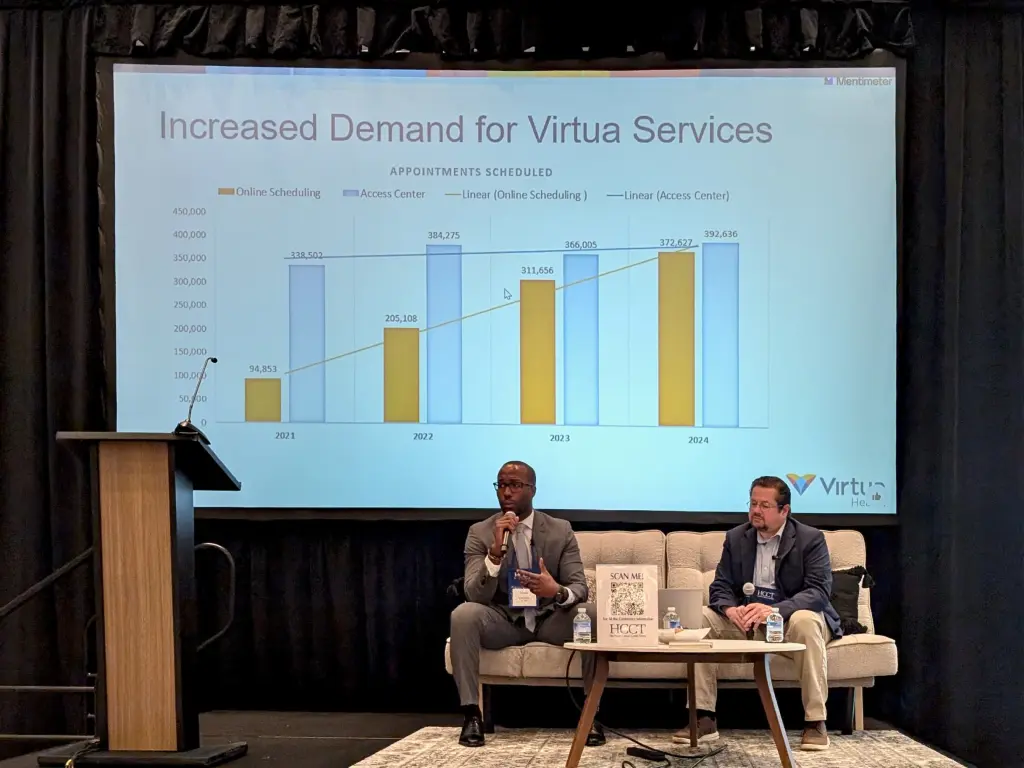

Five key takeaways from the Healthcare Contact Center Times conference that signal where the industry may be heading.
Last week at the Healthcare Contact Center Times (HCCT) conference in Atlanta, something remarkable was happening in the exhibit halls and roundtable discussions. The entire industry felt like it was truly collaborating, not just competing, to solve one of healthcare's most persistent challenges: patient access.
As first-time HCCT exhibitors and attendees, we walked away with five key insights that paint a picture of an industry in rapid transformation.
What struck us most was the genuine spirit of collaboration between vendors and health systems.
Unlike other healthcare technology conferences where competitive posturing dominates conversations, HCCT felt different. Vendors, health system leaders, and technology partners were openly brainstorming together in roundtable sessions, sharing challenges without the usual guardedness.
This makes sense when you consider that we're all grappling with the same fundamental question: What does the future of patient access actually look like? The answer isn't going to come from any single vendor or health system working in isolation.
Despite the AI hype cycle we're all living through, we were surprised by how much the industry is still in "learning mode" when it comes to AI and call center ecosystems.
While nearly every attendee understood AI basics, the depth of knowledge around generative AI, agentic AI, and how these systems are built and deployed varied greatly.
Against this backdrop of rapidly developing technology, Malik Bahar from Virtua Health challenged attendees to push through organizational barriers and embrace new ways of engaging with patients. Working across all the channels and leveraging AI aren't just nice-to-haves; they're essential for staying relevant.
Malik’s clear call to action was to start now. The organizations that engage with AI solutions today through pilots, partnerships, and iterative implementations will build the expertise and institutional knowledge that will become increasingly valuable as the technology matures. Waiting for "perfect" solutions or industry consensus may mean missing the opportunity to gain early competitive advantages.
One session stood out for its focus on the organizational side of technological transformation.
Jake Harwood from Slalom and Sierra Kelly-Martinez from Renown Health delivered a masterclass in change management, highlighting that how you implement transformation is just as important as what you're implementing.
They designed a program that brought together the entire organization — from the steering committee to provider leaders — driven by a clear vision they could return to through the effort. The focus on rapid value delivery, launching and then working through a backlog of enhancements driven by real-world data resonated.
The most visceral demonstration of how fast this space is moving came during cocktail hour. With conversations buzzing around us, we had to shout to be heard by an AI demo. The system responded perfectly: low latency, patient answers, complete noise isolation. None of that technological sophistication would have been possible just six months ago.
This pace of innovation is both exciting and daunting for healthcare organizations trying to make technology decisions with 3-5 year planning horizons.
As we left Atlanta, one thing was clear: we're witnessing the early stages of a fundamental transformation in how patients access healthcare services. The collaboration, innovation, and shared learning happening at conferences like HCCT suggests that while we may not know exactly what the future looks like, we're building it together.
The question isn't whether AI and automation will transform healthcare call centers. It’s how quickly healthcare organizations can adapt their processes, train their teams, and redesign their patient experience around these new capabilities.
This transformation has several strategic implications for healthcare call center and patient access leaders: